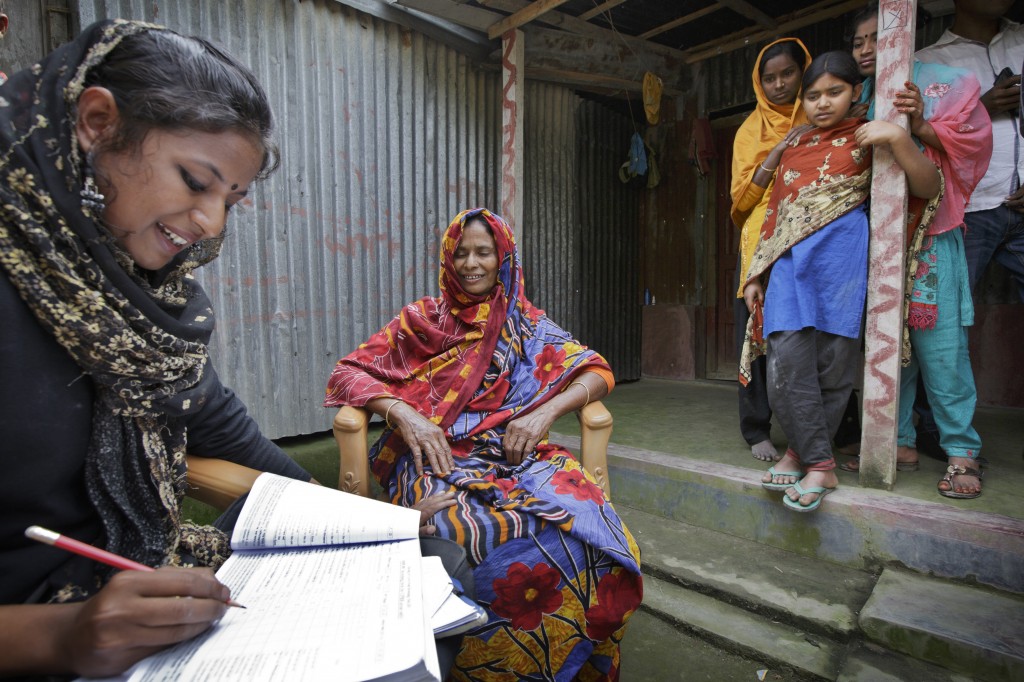WHO Report Outlines Ten Ways to Prevent Drowning

By Bloomberg Philanthropies Public Health Team
More than 370,000 people die from drowning around the world every year. That’s about 42 deaths every hour of every day. This annual drowning death toll is about two-thirds of that caused by malnutrition, and about half of that caused by malaria.
The vast majority of these drowning deaths – 91 percent – occur in low- and middle-income countries. And the highest rate of death is among adolescents and children age 5 and under. In Bangladesh, drowning now accounts for 43 percent of deaths among children aged 1 to 4.
“Whether it is small children slipping unnoticed into a pond, pool or well; adolescents swimming under the influence of alcohol or drugs; passengers on vessels that capsize; or residents of coastal communities struck by floods, the daily toll of this leading global killer continues its quiet rise,” said Margaret Chan, director-general of the World Health Organization.
Yet there is no worldwide prevention campaign designed to reduce drowning deaths. And drowning is one of the more preventable causes of death, as high-income countries have discovered through their own efforts to limit this all-too-common killer.
To help put better data and context behind this leading cause of death, Bloomberg Philanthropies helped fund a new World Health Organization study The Global Report on Drowning; Preventing a Leading Killer. Bloomberg Philanthropies CEO Patricia E. Harris and Dr. Kelly Henning of the Foundation’s public health team, travelled to Geneva to launch the report which is the first major study of its kind to look at drowning deaths worldwide, their causes, and to recommend practical solutions that will prevent these needless deaths.
“Despite the terrible toll drowning takes on communities around the world – especially in low- and middle-income countries – it hasn’t gotten the attention it deserves as a serious and preventable problem. This report can help change that, and it will help us save many lives,” said Patricia E. Harris.
The report makes 10 concrete recommendations, five that communities themselves can undertake, and five that require coordinated national efforts.
Local Efforts
- Install barriers controlling access to water. These can range from locally manufactured simple playpens, better covers for wells, cisterns, and water tanks, and four-sided, child-resistant fences around private and public swimming pools.
- Provide safe places away from water for children, with capable child-care. Community child care for children up to age 5 can have a tremendous reduction on drowning, and has positive side benefits as well for early childhood development.
- Teach school-age children basic swimming, water safety, and safe-rescue skills. A recent study in Bangladesh of 80,000 children age 4 to 12 who had taken a “Swim Safe” course showed a dramatic reduction in drowning.
- Train bystanders in timely safe-rescue and resuscitation methods. Many rescuers themselves drown because they don’t swim well or don’t know rescue techniques that avoid entering the water, such as using a rod or pole, throwing a rope, lifebuoy or improvised life-line such as a garden hose. Cardiopulmonary Resuscitation (CPR) definitely saves lives of drowning victims, but it needs to be applied quickly and by trained practitioners.
- Strengthen public awareness of drowning and highlight the vulnerability of children. Raising awareness about drowning hazards can range from better signs for riptides, waterfalls, and fast currents, to major efforts involving the media such as Texas’s “Turn Around, Don’t Drown” campaign to prevent drivers from crossing flooded roads.
National Efforts
- Set and enforce safe boating, shipping, and ferry regulations. Passenger ferries must be properly regulated, but so too smaller craft such as fishing, recreational, and transport vessels, where the majority of deaths occur. Requiring personal flotation devices, for example, goes a long way toward reducing drowning.
- Build resilience and manage flood risks locally and nationally. National and local disaster plans, effective early warning systems, better land-use planning, preservation of wetlands and forests, can all serve to reduce drowning from coastal and other floods.
- Coordinate drowning prevention efforts with those of other sectors and agendas. Water sanitation programs are natural allies to anti-drowning efforts, as are infrastructure improvements such as irrigation, as long as safe bridges and fords are part of the plans.
- Develop a national water safety plan. Australia, the Philippines and Vietnam have all developed national water safety plans that raise awareness of safety around water, target specific outcomes, build consensus around solutions, provide strategic direction, and monitor results.
- Address priority research questions with well-designed studies. Improving drowning data helps countries understand the full extent and circumstances of drowning, allows them to target interventions more effectively, and evaluate their success.
This report brings needed attention to drowning, a leading cause of death that has been under-measured and researched up to this point. The report also shows the importance of programs working to prevent drowning such as our $10 million program launched in 2012 working in Bangladesh to evaluate two potentially effective drowning prevention methods: community daycare centers and locally manufactured playpens. This program is preventing drowning deaths in children 1 to 4-years-old in Bangladesh and, once proven successful, these types of interventions could be scaled up nationally and in other low- and middle-income countries.